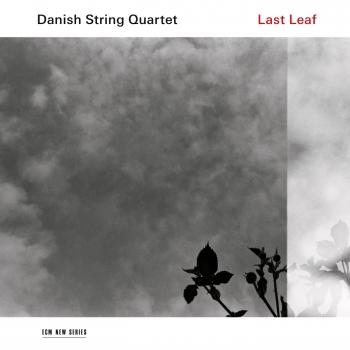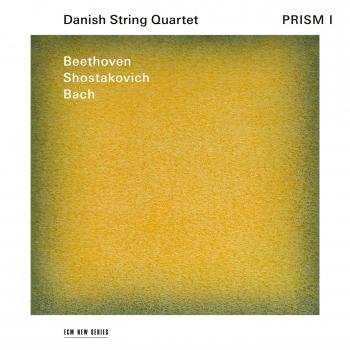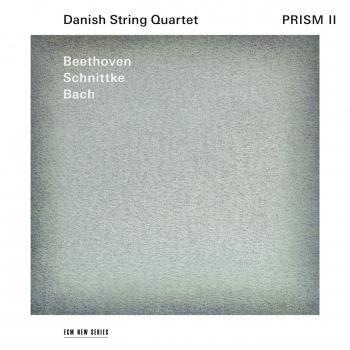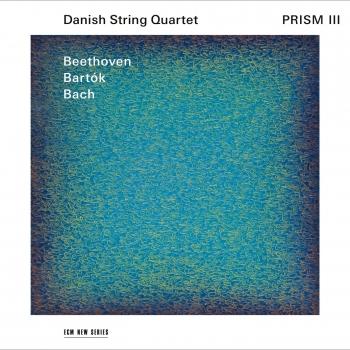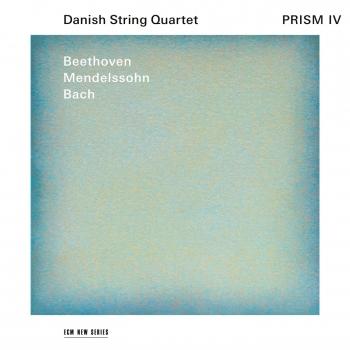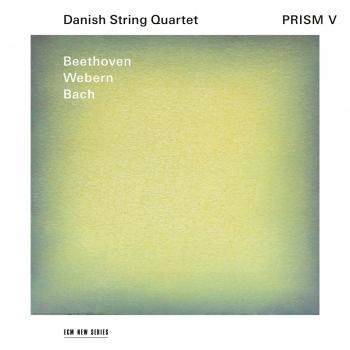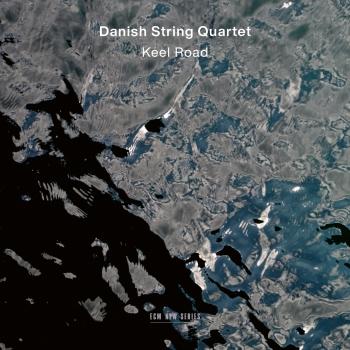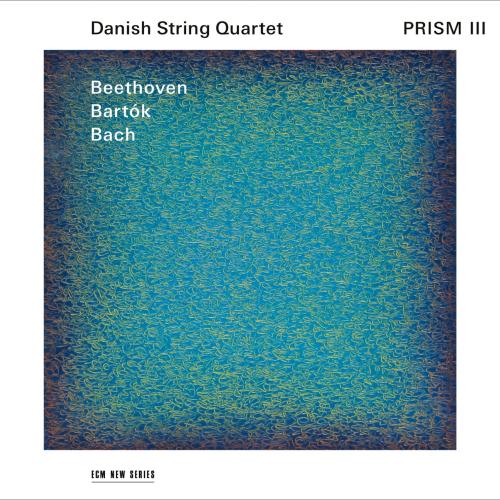
Prism III Danish String Quartet
Album info
Album-Release:
2021
HRA-Release:
12.03.2021
Label: ECM New Series
Genre: Classical
Subgenre: Chamber Music
Artist: Danish String Quartet
Composer: Ludwig van Beethoven (1770–1827), Johann Sebastian Bach (1685–1750), Béla Bartók (1881-1945)
Album including Album cover Booklet (PDF)
I`m sorry!
Dear HIGHRESAUDIO Visitor,
due to territorial constraints and also different releases dates in each country you currently can`t purchase this album. We are updating our release dates twice a week. So, please feel free to check from time-to-time, if the album is available for your country.
We suggest, that you bookmark the album and use our Short List function.
Thank you for your understanding and patience.
Yours sincerely, HIGHRESAUDIO
- Ludwig van Beethoven (1770 - 1827): String Quartet No. 14 in C-Sharp Minor, Op. 131
- 1 Beethoven: String Quartet No. 14 in C-Sharp Minor, Op. 131: 1. Adagio ma non troppo e molto espressivo 08:08
- 2 Beethoven: String Quartet No. 14 in C-Sharp Minor, Op. 131: 2. Allegro molto vivace 03:00
- 3 Beethoven: String Quartet No. 14 in C-Sharp Minor, Op. 131: 3. Allegro moderato - Adagio 00:50
- 4 Beethoven: String Quartet No. 14 in C-Sharp Minor, Op. 131: 4. Andante ma non troppo e molto cantabile - Allegretto 14:47
- 5 Beethoven: String Quartet No. 14 in C-Sharp Minor, Op. 131: 5. Presto 05:15
- 6 Beethoven: String Quartet No. 14 in C-Sharp Minor, Op. 131: 6. Adagio quasi un poco andante 02:28
- 7 Beethoven: String Quartet No. 14 in C-Sharp Minor, Op. 131: 7. Allegro 06:47
- Béla Bartók (1881 - 1945): String Quartet No. 1, Op. 7, Sz. 40
- 8 Bartók: String Quartet No. 1, Op. 7, Sz. 40: 1. Lento 10:23
- 9 Bartók: String Quartet No. 1, Op. 7, Sz. 40: 2. Allegretto 08:37
- 10 Bartók: String Quartet No .1, Op. 7, Sz. 40: 3a. Introduzione. Allegro 01:42
- 11 Bartók: String Quartet No. 1, Op. 7, Sz. 40: 3b. Allegro vivace 10:26
- Johann Sebastian Bach (1685 - 1750): The Well-Tempered Clavier, Book 1
- 12 J.S. Bach: The Well-Tempered Clavier, Book 1: Fugue in C-Sharp Minor, BWV 849 (Arr. Förster for Strings) 04:24
Info for Prism III
The third volume of the Danish String Quartet’s ongoing Prism series, which shows how the radiance of Bach’s fugues is refracted through Beethoven’s quartets to illuminate the work of later composers. “Beethoven had taken a fundamentally linear development from Bach,” the Danes note, “and exploded everything into myriads of different colours, directions and opportunities – much in the same way as a prism splits a beam of light.” Here the quartet follow the beam from Johann Sebastian Bach’s Fugue in c-sharp minor through Ludwig van Beethoven’s String Quartet no.14 to Béla Bartók’s String Quartet No.1.
“Inevitably, we base our work on what we know, as individuals and as a group, but the important thing to us as musicians is that these connections be experienced widely on an intuitive level. We hope the listener will join us in the wonder of these beams of music that travel all the way from Bach through Beethoven as far as to our own times.”
Danish String Quartet violist Asbjørn Nørgaard elaborated on the origins of the Prism project in an interview with the Boston Globe: “The idea came when I was reading Lewis Lockwood’s book about Beethoven. [Beethoven: The Music and the Life] He writes about Beethoven’s lifelong obsession with Bach and, in particular, The Well-Tempered Clavier. In his last years, Beethoven basically spent all his time studying Bach and writing string quartets. Most of the musical material that he used to craft his last five string quartets can be more or less directly found in specific fugues by Bach.”
In the liner notes for Prism III, Paul Griffiths traces the ways in which the essence of Bach’s c-sharp minor fugue is transformed in Beethoven’s op. 131.
In turn, Bartók’s First String Quartet, completed in 1909, when the composer was just 27, and still in the process of discovering his own artistic voice, paid direct homage to Beethoven’s String Quartet no. 14. The first movement begins in the same spirit as Beethoven’s quartet, and as Bartók biographer David Cooper has suggested, “one might argue that there is an even more direct correspondence between Bartók’s overlapping entries and his pairing of instruments and the approach taken by Beethoven in the fourth movement of op. 131.”
Danish String Quartet
Danish String Quartet
As a string quartet, we find ourselves at the core of the classical music world. On a daily basis we delve deeply into works by great masters such as Beethoven and Mozart, but we also play the occasional folk gig. Over the years we have been fortunate to study in many different places in masterclasses with renowned teachers and have had opportunities to perform in major concert halls across the world. Sometimes a friendly reviewer has written nice things about us too. We have participated in competitions and made some recordings as well. If you want to know more about all this stuff, check out the ‘press‘ page on our site, where you can download a PDF with all the text you could hope for.
Here’s a simpler story of the quartet: We are three Danes and one Norwegian cellist, making this a truly Scandinavian endeavor. We are often joking about ourselves being modern Vikings – perhaps a touch more harmless than our ancestors – we are not pillaging cities or razing the English coastline! We are simply your friendly neighborhood string quartet with above average amounts of beard.The three of us met very early in our lives in the Danish countryside at an amazing summer camp for enthusiastic amateur musicians. Not yet teenagers, we were the youngest players, so we hung out all the time playing football and chamber music together. During the regular school year we would get together often to play music and just have fun. We became best friends. In 2001, professor Tim Frederiksen of The Royal Academy of Music in Copenhagen got in touch with us and started coaching us on a regular basis. All of the sudden, at the ages of 15 and 16, we were a serious string quartet. It all happened so fast that none of us seemed to notice the transition.
Time passed and we grew up. We were enrolled at The Royal Academy of Music and our life as music students had begun. Funnily enough, none of us have any memory of our lives without the string quartet. In 2008 Norwegian cellist Fredrik joined in, generously adding to the amount of beard and general Vikingness of the group. We found him hidden away in a castle outside Stockholm. During his free time, Fredrik can be found fixing or sailing his sailboat somewhere in Scandinavia.The rest of us spend time with different hobbies – old cars, cooking, gaming, reading, playing, talking, and drinking. Yes, playing string quartets is our job, and yes it is hard work, but we mostly do it for pleasure, like we always did.There is so much amazing music to delve into, and our hope is to continue our travels through life and music together as a quartet. We want to be able to share our music with as many people as possible. And of course, the ultimate goal is to beat Valentin Berlinsky’s (Borodin String quartet) world record of “most years in the same chamber music group”. We will reach that goal around 2060 and on that day we will host a giant feast – you shall all be invited!
Booklet for Prism III











